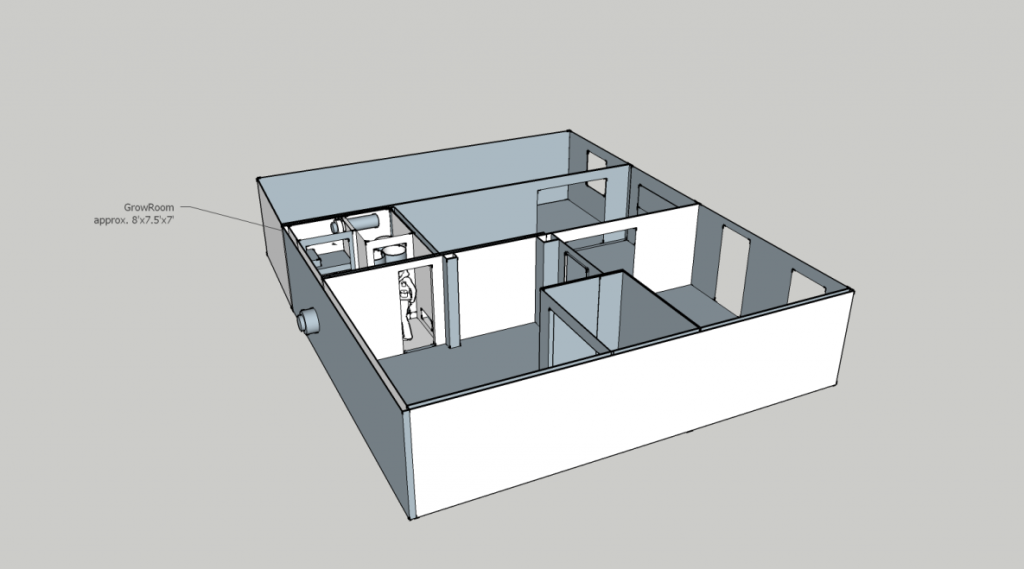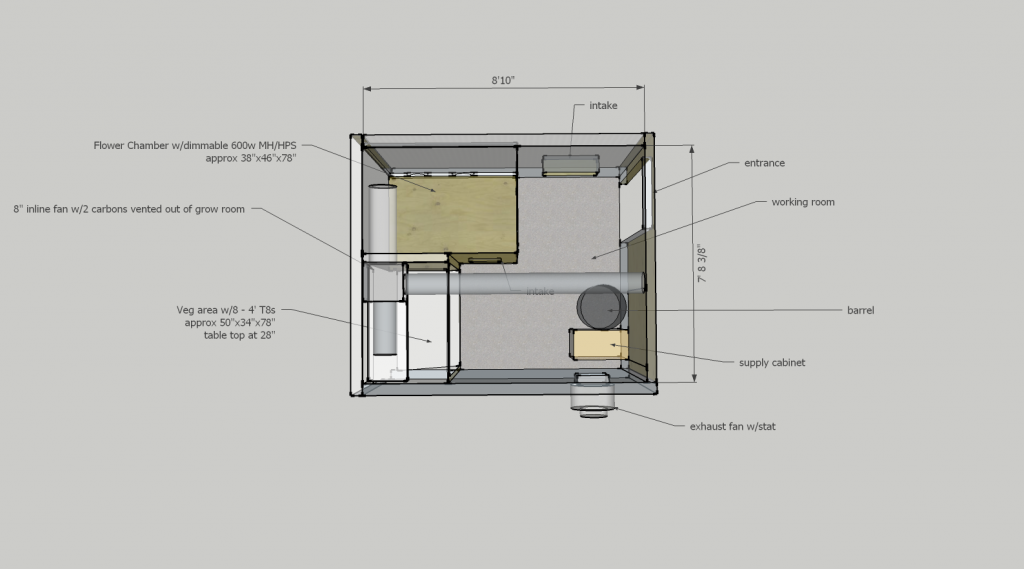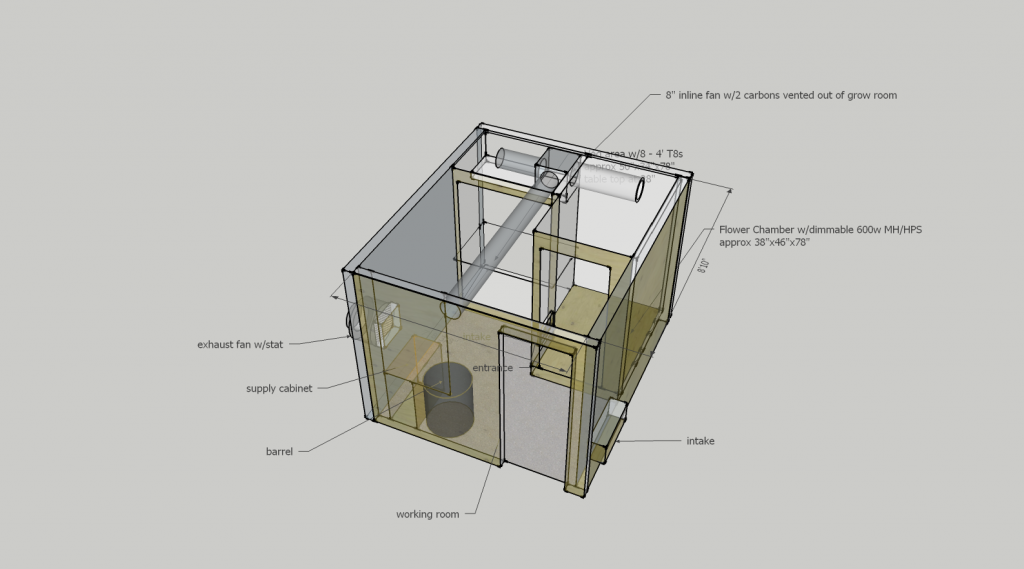SmokzAlot
New Member
Here is the big K.I.S.S. project I have waited for and collected material for quite some time. The majority of this project was accomplished with on hand left over construction material for basic room construction, within an existing structure. Used 3/4"x4'x8' plywood made for quick yet strong modular wall construction. I required three new walls. Old 4x4s from my wood pile in the barn made for good framing done in an open framing style, not a standard 16" or 24" manner. My door as an example was a throw away form someone's home replacement project. The lock set was from a previous upgrade of my own. Sorry I don't have pictures as I have the room up and running for the most part. It is not complete by any means. I prefer to build with a free grow of bag seed and tweak the environment as I go. I will do my best to get you up to date with what I have accomplished and how I got there. I will illustrate with SketchUp drawings and photos as I go.
My Goal is to establish a permanent growing space for all phases of growing. A suite to include but not limited to vegging, flowering, drying, and propagation. As stated I am beginning by establishing an area in an existing structure. The area was once a small spray paint booth, so exhaust is present and more than adequate for the space, for the time being. Smell is not a big issue due to Location, Location, Location. I will however add filtration later. Same to be said for A/C when summer gets here again.
I will try to write in pieces to provide opportunity for interaction if there are any questions along the way.
K.I.S.S. does not mean cheap and ineffective. More so it means affordable and effective, yet easy to setup and maintain. This project will require a reasonable amount of knowledge and skill in things like simple carpentry to running your own electric.

My Goal is to establish a permanent growing space for all phases of growing. A suite to include but not limited to vegging, flowering, drying, and propagation. As stated I am beginning by establishing an area in an existing structure. The area was once a small spray paint booth, so exhaust is present and more than adequate for the space, for the time being. Smell is not a big issue due to Location, Location, Location. I will however add filtration later. Same to be said for A/C when summer gets here again.
I will try to write in pieces to provide opportunity for interaction if there are any questions along the way.
K.I.S.S. does not mean cheap and ineffective. More so it means affordable and effective, yet easy to setup and maintain. This project will require a reasonable amount of knowledge and skill in things like simple carpentry to running your own electric.






